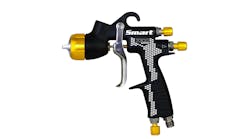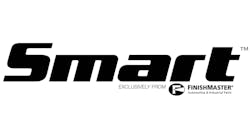Believe it or not, there is money to be saved and it can be found in managing your inventory. But how do you capitalize on that? By allowing your distribution account manager to assist you with your inventory management, you can get back to the things you enjoy about owning your own shop.
We know, turning over some of the decision making in the day-to-day operations of your business can be difficult. No one knows it better than you. However, a few minutes of your time reading this article could help you save a few dollars.
The journey to savings begins with your account manager (AM) working with you to develop a plan to manage your inventory and set up a delivery schedule that benefits your business. Utilizing usage data, your AM can help you decide on an inventory management system that works best for you, customizing a unique solution that is either a self-managed process or an installed automated system.
Self-managed Inventory Process
A managed customer inventory combines KPI reports, set minimums and maximums, and efficient organization to create a system that a shop can easily manage themselves to keep ordering time and product waste to a minimum.
When you first begin tackling inventory management, key performance indicator (KPI) reports should be run, and then analyzed, to identify product overuse as well as training and process implementations that are needed. Once you have reviewed the numbers, a preferred product list can be vetted by the shop manager or technicians. Enforcing the preferred product list will help you more accurately forecast inventory levels and spend.
Shops have seen success with a variety of different set-ups when it comes to organizing and ordering. You may choose to use baker racks or cabinets to stock your products in efficient rows where missing or low items can be easily identified. Consistently lining up products in the same place with min/max levels clearly labeled can help keep your product orders in line with shop performance.
Laminated posters or sheets could also work well when placing weekly inventory orders. You can use barcode scanners with a poster or sheet containing photos, part numbers, descriptions, and barcodes to quickly place shop wide orders. Or another option is to distribute to each technician an individual sheet where they can indicate what products they need for the day and hand it off to a gatekeeper for processing.
The benefits of this system include weekly inventory preparedness, 5–10-minute order placements, and you can see when you need to make allowances for a busy or slow week in real-time. By cross-training multiple team members, you can ensure there’s always someone around who is able to assist placing orders.
The initial investment of the cabinets or racks could be hefty and if you don’t continue to run KPI reports, you may have overages and shortages with a self-managed inventory system. But if you work closely with your account manager, you can be better prepared and save on overhead expenses throughout the year.
Automated Inventory Management Systems
If you are interested in an automated inventory management system (IMS), talk to your distribution account manager to see what programs they can install for your business. Automated systems align you with a system that is supported by a specialty company to adopt a process primarily controlled by a scanner or computer. These types of systems could include, but are not limited to, NuVentory, LeanTec, and the Key-to-Key system by 3M.
When coupling automated inventory systems and an account manager’s insight, it’s possible to keep costs low and profitability high. Your AM can run periodic spreadsheets to pinpoint which paint or body technician is using too much product by comparing consumption costs against hours produced.
IMS systems can be a great addition to your shop, placing orders automatically, keeping your stock full, your back of house moving efficiently, and your production numbers high. Lowering in house expenditures allows a shop to streamline the products they have on hand, only stocking items that are needed for a specified time frame. These systems provide you readily available knowledge on inventory stock dollar amounts at any time, no longer needing month-end inventory.
Visually seeing material profits throughout the month allows owners and managers to compare production and usage versus hours produced by tech. For example, Tech A & B both completed 80 flag hours for the week. However, Tech A used $500 in materials and Tech B used $1,000 in material. You can review reports that help to easily identify waste, inefficiencies and perhaps where additional training is needed.
IMS systems can be pricey for the installation of the computer system and software, but a good AM will work with you to get the best program for your business and ensure that you use it to its full potential. Being in tune with numbers and usage can help save you more money than you realize. Having the data at your fingertips can help to keep you agile and enable you to make changes when and where you need them the most.
There are some things to be aware of when moving your shop to an IMS. A primary and secondary gatekeeper is recommended so that there is always someone available to aid when needed. This means that anyone who needs or wants to know how to use the system, must be trained on the more complex IMS. Also, minimums and maximums are predetermined and cannot account for changes in customer numbers. Be sure to keep your AM involved and informed on reports so that they can help to identify any changes that need to be made.
Teaming Up With Your AM Is The Key To Savings
“Having an inventory management system allows the customer the ability to control their inventory with such efficiency that they can easily transition from daily and emergency fill-in orders to weekly or monthly ordering cycles, thereby lowering their wasted time interacting with delivery drivers and minimizing ordering mistakes by servicing electronic order picking.” – Victor de la Uz, Sales Team Leader at FinishMaster.
Partnering with your distributor to manage your inventory can sometimes be seen as taboo, but we’re here to tell you it is not a bad thing. Some people may find it difficult to relinquish some of the control in their business, but we are hoping that this helps to open your eyes to some of the benefits that could make it all worthwhile.
FinishMaster is here to help you and your business succeed. One way we can do that is through an inventory management system, whether it’s with a customer managed or automated system. Our Account Management team will help you build a customized solution that works with what you have, helping you get to where you want to be. Your AM will train alongside you to learn your system, so they help with any future needs adding new part numbers, adjusting reorder points and stock levels, and running reports.
By reviewing your business reports and doing weekly stock orders with you, we can help you eliminate the guesswork. We will help you identify needs and will help you implement new processes that lead to more productivity. As a bonus, combining your account management services and IMS with other initiatives, like technician spiff programs, you can create a facility-wide culture that values increased product usage efficiency.
After all, FinishMaster is here to help, from start to finish!




